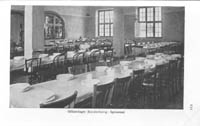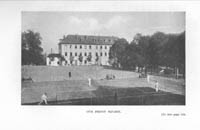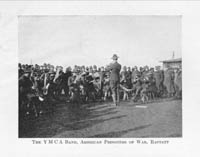Table of Contents
Chapter 14
The American YMCA and U.S. Prisoners-of-War in Germany
1
 Probably the most important factor in the German government's decision not to expel Conrad Hoffman was the arrival of
American prisoners in Germany. By November 1917, the Germans had captured thirty-nine American POWs, and Hoffman made
one last attempt to visit them. He argued that if the Ministry of War refused to permit him to see these men, conditions
in the camps must be too terrible for Americans to see.
Probably the most important factor in the German government's decision not to expel Conrad Hoffman was the arrival of
American prisoners in Germany. By November 1917, the Germans had captured thirty-nine American POWs, and Hoffman made
one last attempt to visit them. He argued that if the Ministry of War refused to permit him to see these men, conditions
in the camps must be too terrible for Americans to see.
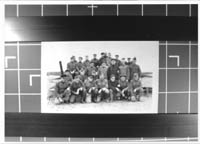 Hoffman became an enemy alien when the United States declared war against Germany in April 1917; while the Germans permitted
the Senior Secretary to supervise the WPA Office in Berlin, he was not allowed to leave the capital. By June 1918, the
Germans relented and decided to reconsider their earlier policy. As a result, the Ministry of War restored Hoffman's
permit to visit American prisoners. The number of American prisoners had increased to over one hundred men by February,
most of whom were seamen who had survived the torpedoing of their merchant ships.
Hoffman became an enemy alien when the United States declared war against Germany in April 1917; while the Germans permitted
the Senior Secretary to supervise the WPA Office in Berlin, he was not allowed to leave the capital. By June 1918, the
Germans relented and decided to reconsider their earlier policy. As a result, the Ministry of War restored Hoffman's
permit to visit American prisoners. The number of American prisoners had increased to over one hundred men by February,
most of whom were seamen who had survived the torpedoing of their merchant ships.
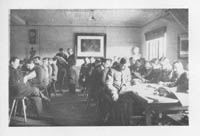 Very few prisoners were captured American soldiers at this time. The Germans spread U.S. POWs across the German Empire:
American merchant marine internees languished at Brandenburg; U.S. privates were assigned to the prison camps at Tuchel,
Darmstadt, and Giessen; American officers were incarcerated in Villingen, Carlsruhe, and Landshut; and some prison camps
held only a few American prisoners. The Germans assigned interned American civilians (a total of 144) to four prison
camps: Güstrow, Holzminden, Brandenburg, and Parchim. By the end of the war, the Germans had captured a total of
3,602 Americans.1
Very few prisoners were captured American soldiers at this time. The Germans spread U.S. POWs across the German Empire:
American merchant marine internees languished at Brandenburg; U.S. privates were assigned to the prison camps at Tuchel,
Darmstadt, and Giessen; American officers were incarcerated in Villingen, Carlsruhe, and Landshut; and some prison camps
held only a few American prisoners. The Germans assigned interned American civilians (a total of 144) to four prison
camps: Güstrow, Holzminden, Brandenburg, and Parchim. By the end of the war, the Germans had captured a total of
3,602 Americans.1
2
 As experts in POW relief, the American YMCA did everything possible to improve the lot of U.S. prisoners. In the January 1918 of the
organization's monthly magazine, The North American Student, one WPA field secretary described in detail what a prisoner would want
if he were captured by the Germans. J. Gustav White, who was at that time assigned to the Bern WPA Office in Switzerland,
became responsible for locating American prisoners in Germany.
As experts in POW relief, the American YMCA did everything possible to improve the lot of U.S. prisoners. In the January 1918 of the
organization's monthly magazine, The North American Student, one WPA field secretary described in detail what a prisoner would want
if he were captured by the Germans. J. Gustav White, who was at that time assigned to the Bern WPA Office in Switzerland,
became responsible for locating American prisoners in Germany.
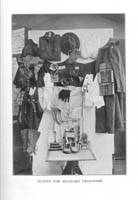 At the same time, Archibald Harte developed close relations with the International Red Cross in Geneva to alert the
Copenhagen WPA Office about the whereabouts of U.S. prisoners. E. G. Wilson sprang into action as soon as he received
word about the arrival of an American POW at a German prison camp. He sent each man a parcel of emergency food and wrote
a personal letter, offering to contact their families and serve them in any way possible.
At the same time, Archibald Harte developed close relations with the International Red Cross in Geneva to alert the
Copenhagen WPA Office about the whereabouts of U.S. prisoners. E. G. Wilson sprang into action as soon as he received
word about the arrival of an American POW at a German prison camp. He sent each man a parcel of emergency food and wrote
a personal letter, offering to contact their families and serve them in any way possible.
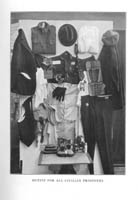 Immediately upon the receipt of the name and address of a POW in Germany, the International Committee sent food parcels
containing one loaf of rye bread, two loaves of wheat bread, one can of milk, coffee, cheese, sugar, oil, sardines,
corn flakes, butter, and preserves.
Immediately upon the receipt of the name and address of a POW in Germany, the International Committee sent food parcels
containing one loaf of rye bread, two loaves of wheat bread, one can of milk, coffee, cheese, sugar, oil, sardines,
corn flakes, butter, and preserves.
 These food parcels greatly augmented American prison fare and guaranteed the survival of a large number of U.S. POWs.
Since many of these prisoners had lost most of their possessions at sea, Wilson sent them underwear, socks, handkerchiefs,
soap, towels, combs, sweaters, shirts, pants, and coats upon request. The WPA offices in Bern and Copenhagen sent
American POWs books, phonographs, records, athletic equipment, and writing materials through the Berlin office. The
Association also provided lists of American POWs received from the Ministry of War to the American Red Cross; the Red
Cross then began regular food parcel shipments to these men.2
These food parcels greatly augmented American prison fare and guaranteed the survival of a large number of U.S. POWs.
Since many of these prisoners had lost most of their possessions at sea, Wilson sent them underwear, socks, handkerchiefs,
soap, towels, combs, sweaters, shirts, pants, and coats upon request. The WPA offices in Bern and Copenhagen sent
American POWs books, phonographs, records, athletic equipment, and writing materials through the Berlin office. The
Association also provided lists of American POWs received from the Ministry of War to the American Red Cross; the Red
Cross then began regular food parcel shipments to these men.2
3
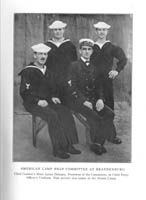 Rearmed with a Ministry of War permit, Hoffman conducted an extensive tour of German POW camps holding American prisoners
in June and July 1918. He traveled south and investigated prison camps in Hesse, Saxony, western Prussia, and Baden. He
began his trip in the prison camp at Brandenburg, where he found thirty-one American prisoners.
He proceeded to
Rearmed with a Ministry of War permit, Hoffman conducted an extensive tour of German POW camps holding American prisoners
in June and July 1918. He traveled south and investigated prison camps in Hesse, Saxony, western Prussia, and Baden. He
began his trip in the prison camp at Brandenburg, where he found thirty-one American prisoners.
He proceeded to 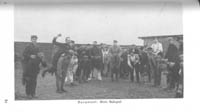 Darmstadt, which was one of the best prison facilities in Germany, as POWs there enjoyed an excellent hospital, athletics,
schools, and a theater.
Darmstadt, which was one of the best prison facilities in Germany, as POWs there enjoyed an excellent hospital, athletics,
schools, and a theater.
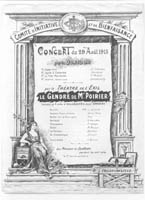 Hoffman found thirty-seven American prisoners in Darmstadt, although records indicated that over one hundred were supposed to be in
the camp; the others had left on labor detachments with prisoners from Giessen. The American POWs needed uniforms,
underwear, socks, and boots, and they lacked money. The Senior Secretary left five hundred Marks for them, and ordered parcels
from Copenhagen and Berlin to meet their needs. He also made provisions for six invalid Americans held in the lazerette at Darmstadt.
Social work at Münster was hampered by the large quadrangle layout, while Hoffman considered Friedrichsfeld one of
the best organized and equipped camps in Germany.
Hoffman found thirty-seven American prisoners in Darmstadt, although records indicated that over one hundred were supposed to be in
the camp; the others had left on labor detachments with prisoners from Giessen. The American POWs needed uniforms,
underwear, socks, and boots, and they lacked money. The Senior Secretary left five hundred Marks for them, and ordered parcels
from Copenhagen and Berlin to meet their needs. He also made provisions for six invalid Americans held in the lazerette at Darmstadt.
Social work at Münster was hampered by the large quadrangle layout, while Hoffman considered Friedrichsfeld one of
the best organized and equipped camps in Germany.
4
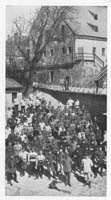 The Germans located most of the officers' camps in western Germany in old castles and fortresses. At Crefeld, Bischofswerda,
and Heidelberg, captured Allied officers lived in former German officers' quarters. The Germans housed over 1,200 Russian officers
at Gütersloh, but conditions were a bit less comfortable for Allied officers at Beeskow, Torgau, and Mainz since they
lived in old fortresses, while officers at Königstein and Plassenburg inhabited old castles. The Germans assigned most
American officers to the camp at Villingen, where they were quartered in wooden barracks.
The Germans located most of the officers' camps in western Germany in old castles and fortresses. At Crefeld, Bischofswerda,
and Heidelberg, captured Allied officers lived in former German officers' quarters. The Germans housed over 1,200 Russian officers
at Gütersloh, but conditions were a bit less comfortable for Allied officers at Beeskow, Torgau, and Mainz since they
lived in old fortresses, while officers at Königstein and Plassenburg inhabited old castles. The Germans assigned most
American officers to the camp at Villingen, where they were quartered in wooden barracks.
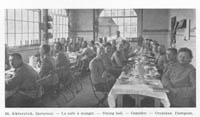 Thirty American officers and 120 Russian officers were incarcerated at this camp. The Germans provided a wide range of
amenities for the POWs at Villingen, including a theater with a cinema, tennis courts, a library, gardens, music rooms,
shower baths, a barbershop, a dentist office, and a canteen. Hoffman promised to send these men some provisions,
copies of the YMCA's monthly magazine, Association Men, a variety of books, a phonograph, and sports equipment. Allied officers at Burg also lived in
wooden barracks.3
Thirty American officers and 120 Russian officers were incarcerated at this camp. The Germans provided a wide range of
amenities for the POWs at Villingen, including a theater with a cinema, tennis courts, a library, gardens, music rooms,
shower baths, a barbershop, a dentist office, and a canteen. Hoffman promised to send these men some provisions,
copies of the YMCA's monthly magazine, Association Men, a variety of books, a phonograph, and sports equipment. Allied officers at Burg also lived in
wooden barracks.3
5
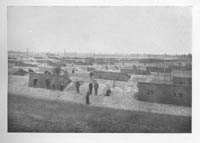 Despite some problems in the administration of prison camps in southern and western Germany, conditions there were
superior in organization and efficiency in comparison to camps in eastern Germany. Allied POWs in East and West Prussia
did not even have access to wooden barracks; most prisoners lived in semi-dugouts. The Germans assigned hordes of Russian
prisoners to these camps, and the outbreak of an epidemic always threatened, despite the best efforts of German sanitary
teams. At Czersk, Hoffman noted a large number of cases of pneumonia and malnutrition.
Despite some problems in the administration of prison camps in southern and western Germany, conditions there were
superior in organization and efficiency in comparison to camps in eastern Germany. Allied POWs in East and West Prussia
did not even have access to wooden barracks; most prisoners lived in semi-dugouts. The Germans assigned hordes of Russian
prisoners to these camps, and the outbreak of an epidemic always threatened, despite the best efforts of German sanitary
teams. At Czersk, Hoffman noted a large number of cases of pneumonia and malnutrition.
 Similar conditions existed at Hammerstein, where the Germans maintained sixty-five thousand prisoners. This facility also included a
special propaganda compound for Ukrainian and German-Russian POWs. Allied prisoners were confined on canal boats and large
freight steamers at Danzig. The Germans constructed a kitchen, canteen, hospital, and theater on shore for these men, but
they lived on boats that were cold, damp, and unsanitary. Another dreary camp was at Tuchel. While the Germans constructed
a large assembly hall for the POWs at Tuchel, the prisoners slept in underground dugouts with dirt floors. Water ran
constantly through their quarters, and as a result these hovels were cold and damp, a veritable den of sickness and disease.
The Germans sent over forty American POWs to Tuchel, and eight Americans lay in the prison hospital at that facility. The
camp particularly needed medical books and special food for the sick and wounded.4
Similar conditions existed at Hammerstein, where the Germans maintained sixty-five thousand prisoners. This facility also included a
special propaganda compound for Ukrainian and German-Russian POWs. Allied prisoners were confined on canal boats and large
freight steamers at Danzig. The Germans constructed a kitchen, canteen, hospital, and theater on shore for these men, but
they lived on boats that were cold, damp, and unsanitary. Another dreary camp was at Tuchel. While the Germans constructed
a large assembly hall for the POWs at Tuchel, the prisoners slept in underground dugouts with dirt floors. Water ran
constantly through their quarters, and as a result these hovels were cold and damp, a veritable den of sickness and disease.
The Germans sent over forty American POWs to Tuchel, and eight Americans lay in the prison hospital at that facility. The
camp particularly needed medical books and special food for the sick and wounded.4
6
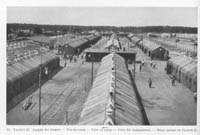 During this general tour in June 1918, Hoffman recommended to the Ministry of War that the Prisoners of War Department
concentrate all American POWs in one prison facility. This alleviated the administrative, shipping, and travel costs of
trying to provide assistance to American POWs scattered across the empire. The Germans agreed to congregate U.S.
non-commissioned officers and enlisted men in one facility, and selected Tuchel as the primary American prison depot
(American officers remained incarcerated at Villingen). After Hoffman's inspection of Tuchel in July, he protested
against the unsanitary conditions in the camp. His report persuaded the Ministry of War to reassign American prisoners to
Rastatt in Baden, a propaganda camp for Ukrainian POWs that was a much better facility.5
During this general tour in June 1918, Hoffman recommended to the Ministry of War that the Prisoners of War Department
concentrate all American POWs in one prison facility. This alleviated the administrative, shipping, and travel costs of
trying to provide assistance to American POWs scattered across the empire. The Germans agreed to congregate U.S.
non-commissioned officers and enlisted men in one facility, and selected Tuchel as the primary American prison depot
(American officers remained incarcerated at Villingen). After Hoffman's inspection of Tuchel in July, he protested
against the unsanitary conditions in the camp. His report persuaded the Ministry of War to reassign American prisoners to
Rastatt in Baden, a propaganda camp for Ukrainian POWs that was a much better facility.5
7
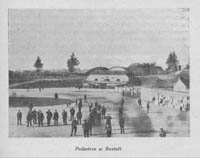 One obstacle to the development of YMCA work for American POWs was the lack of an effective treaty between Germany
and the United States. While both countries adhered to the Hague Agreements of 1899 and 1907, problems in the implementation
of POW services emerged during the war, which led Britain and France to negotiate further bilateral treaties with Germany.
The last direct agreement between Berlin and Washington that addressed prisoner-of-war issues was the Prussian-American
Treaty of 1828. In June 1918, Hoffman urged the U.S. government to negotiate an agreement pertaining to the treatment of
POWs with the Germans in a neutral country.
One obstacle to the development of YMCA work for American POWs was the lack of an effective treaty between Germany
and the United States. While both countries adhered to the Hague Agreements of 1899 and 1907, problems in the implementation
of POW services emerged during the war, which led Britain and France to negotiate further bilateral treaties with Germany.
The last direct agreement between Berlin and Washington that addressed prisoner-of-war issues was the Prussian-American
Treaty of 1828. In June 1918, Hoffman urged the U.S. government to negotiate an agreement pertaining to the treatment of
POWs with the Germans in a neutral country.
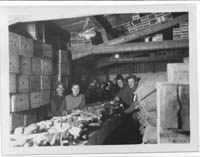 He sent recommendations to American authorities for important provisions for consideration at a POW conference. He requested
that the Germans report the names of American prisoners more quickly, and that the American Red Cross or American YMCA send
parcels to captured troops in occupied France or Belgium (under the current system, American prisoners did not receive
parcels until they arrived at a German Stammlager); that American POWs should be allowed to retain the clothing,
underwear, and boots they possessed at the time of their capture; and that the Germans should not compel American enlisted
prisoners to work in any war-related industry. Hoffman also recommended that the U.S. government insist on the absolute
abolishment of all reprisal measures against war prisoners, and that the chairmen of American camp relief committees should
be permitted to correspond directly with welfare agencies without losing writing privileges.
He sent recommendations to American authorities for important provisions for consideration at a POW conference. He requested
that the Germans report the names of American prisoners more quickly, and that the American Red Cross or American YMCA send
parcels to captured troops in occupied France or Belgium (under the current system, American prisoners did not receive
parcels until they arrived at a German Stammlager); that American POWs should be allowed to retain the clothing,
underwear, and boots they possessed at the time of their capture; and that the Germans should not compel American enlisted
prisoners to work in any war-related industry. Hoffman also recommended that the U.S. government insist on the absolute
abolishment of all reprisal measures against war prisoners, and that the chairmen of American camp relief committees should
be permitted to correspond directly with welfare agencies without losing writing privileges.
8 For American officers, the senior secretary suggested that the Germans increase the monthly stipend paid to officers and that officers be allowed to take unsupervised strolls in the country. Hoffman again recommended that the Germans should concentrate all U.S. POWs in a single prison camp, and suggested that an American (if Hoffman was not permitted) should visit American POWs on a regular basis (the Germans accepted the last two items before a treaty was concluded). After conducting preliminary talks in Switzerland and the Netherlands, German and American officials began POW negotiations in Bern on 23 September 1918 (after a three month delay). They incorporated many of Hoffman's recommendations in a liberal and enlightened document, which the representatives signed on November 9. Unfortunately, the treaty never went into effect, since it was superseded by the terms of the Armistice on the Western Front, which went into effect two days later.6
9
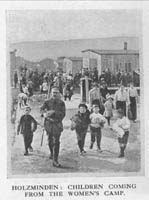 Hoffman also provided an important service for Panamanians trapped in Germany. Shortly after Panama declared war against
the German Empire on 7 April 1917, the Germans interned Panamanian civilians-mostly students attending the University of
Berlin-in prison camps. Rumors circulated in Germany asserting that their countrymen in Panama had been forced to work at
hard labor in stone quarries. The authorities sent the Panamanian nationals to the civilian internment camp at Holzminden,
where they were assigned to manual labor making brooms. Hoffman visited these men and arranged for the American YMCA to send
them food parcels from the Copenhagen WPA Office on a regular basis.7
Hoffman also provided an important service for Panamanians trapped in Germany. Shortly after Panama declared war against
the German Empire on 7 April 1917, the Germans interned Panamanian civilians-mostly students attending the University of
Berlin-in prison camps. Rumors circulated in Germany asserting that their countrymen in Panama had been forced to work at
hard labor in stone quarries. The authorities sent the Panamanian nationals to the civilian internment camp at Holzminden,
where they were assigned to manual labor making brooms. Hoffman visited these men and arranged for the American YMCA to send
them food parcels from the Copenhagen WPA Office on a regular basis.7
Setting Up YMCA Operations in Rastatt
10
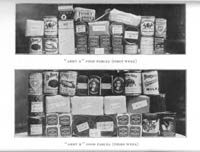 By August 1918, the Germans had transferred most American enlisted POWs to Rastatt. Within three months, approximately
2,600 Americans were assigned to the camp. In September, Hoffman revisited Rastatt and helped establish the American Help
Committee Ukrainian Camp Rastatt, the American POWs' welfare committee, and a YMCA committee. The prisoners organized an
Association cabinet, which included a president (Sergeant Erving A. Dresser), athletic director, education director, music
and entertainment director, and religious director. When the American prisoners first arrived at the camp, the rations
were so poor that many feared they would starve.
By August 1918, the Germans had transferred most American enlisted POWs to Rastatt. Within three months, approximately
2,600 Americans were assigned to the camp. In September, Hoffman revisited Rastatt and helped establish the American Help
Committee Ukrainian Camp Rastatt, the American POWs' welfare committee, and a YMCA committee. The prisoners organized an
Association cabinet, which included a president (Sergeant Erving A. Dresser), athletic director, education director, music
and entertainment director, and religious director. When the American prisoners first arrived at the camp, the rations
were so poor that many feared they would starve.
 Most were eager to work on Arbeitskommandos, where they would get the chance to obtain better food rations. Hoffman
arranged for the immediate delivery of three weeks' rations for one thousand men plus clothing, equipment, shoes, underwear,
uniforms, safety razors, tobacco, cigarettes, and money. He also distributed sixty sets of pajamas provided by Constance
L. R. Morris, the wife of the U.S. Ambassador in Stockholm. Once the immediate needs of the Americans were met, Hoffman
negotiated a welfare plan with the camp commandant. The Germans agreed to construct an Association hut, an
athletic field, and a special kitchen. Hoffman's actions improved camp conditions, and American Red Cross food parcels
began to arrive. Soon the Americans were better fed than the Germans, yet-like British prisoners elsewhere-the U.S. prisoners
continued to take their daily rations from the Germans.8
Most were eager to work on Arbeitskommandos, where they would get the chance to obtain better food rations. Hoffman
arranged for the immediate delivery of three weeks' rations for one thousand men plus clothing, equipment, shoes, underwear,
uniforms, safety razors, tobacco, cigarettes, and money. He also distributed sixty sets of pajamas provided by Constance
L. R. Morris, the wife of the U.S. Ambassador in Stockholm. Once the immediate needs of the Americans were met, Hoffman
negotiated a welfare plan with the camp commandant. The Germans agreed to construct an Association hut, an
athletic field, and a special kitchen. Hoffman's actions improved camp conditions, and American Red Cross food parcels
began to arrive. Soon the Americans were better fed than the Germans, yet-like British prisoners elsewhere-the U.S. prisoners
continued to take their daily rations from the Germans.8
11
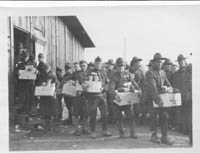 After this visit, Hoffman recommended additional issues to be addressed in a German-American POW Conference. First,
because of the many abuses associated with the employment of prisoners on Arbeitskommandos, the Senior Secretary
argued that the treaty should prohibit the employment of POWs taken by the two countries. If prisoners were not
working outside the prison, however, compulsory attendance at education classes should be enforced. Hoffman also recommended
that both countries should agree to abolish the compound system. The Germans had set up four separate divisions at Rastatt, and prison
authorities did not permit communications between the compounds.9
After this visit, Hoffman recommended additional issues to be addressed in a German-American POW Conference. First,
because of the many abuses associated with the employment of prisoners on Arbeitskommandos, the Senior Secretary
argued that the treaty should prohibit the employment of POWs taken by the two countries. If prisoners were not
working outside the prison, however, compulsory attendance at education classes should be enforced. Hoffman also recommended
that both countries should agree to abolish the compound system. The Germans had set up four separate divisions at Rastatt, and prison
authorities did not permit communications between the compounds.9
12
 Over the next few months, Hoffman concentrated on improving conditions for American POWs at Rastatt. He visited the prison
camp once or twice a month and made a number of important improvements. Hoffman persuaded the Germans to abolish the
compound system, which permitted the POWs to interact freely. More importantly, the commandant granted the American prisoners
a degree of self-government.
Over the next few months, Hoffman concentrated on improving conditions for American POWs at Rastatt. He visited the prison
camp once or twice a month and made a number of important improvements. Hoffman persuaded the Germans to abolish the
compound system, which permitted the POWs to interact freely. More importantly, the commandant granted the American prisoners
a degree of self-government.
 This system was similar to the American penal institutional honor system; under this self-discipline plan, the U.S. prisoners
were generally free from the domination of German non-commissioned officers. Unlike other Allied prisoners (especially the
Russians and British), the Americans did not become the focus of German mistreatment. The YMCA cabinet and the American Help
Committee kept the POWs informed of their rights, and when German guards attempted to abuse U.S. prisoners, they stood up
for themselves. Because American prisoners received generous food rations and clothing allocations through parcels, they
were healthier and displayed greater self-respect, which led to greater respect from German guards.10
This system was similar to the American penal institutional honor system; under this self-discipline plan, the U.S. prisoners
were generally free from the domination of German non-commissioned officers. Unlike other Allied prisoners (especially the
Russians and British), the Americans did not become the focus of German mistreatment. The YMCA cabinet and the American Help
Committee kept the POWs informed of their rights, and when German guards attempted to abuse U.S. prisoners, they stood up
for themselves. Because American prisoners received generous food rations and clothing allocations through parcels, they
were healthier and displayed greater self-respect, which led to greater respect from German guards.10
13
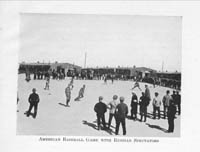 The Bern and Copenhagen WPA Offices shipped a great deal of equipment to Rastatt. The YMCA sent the American POWs enough
musical instruments for a twenty-piece band, an eight-piece orchestra, and a bugle corps; the Association also provided a
piano. Hoffman obtained supplies for a musical show, and the prisoners rented the largest theater in Rastatt for the
production. The band played at football games and funerals. The Association also sent athletic equipment for baseball,
football, volleyball, and handball. The Germans granted the POWs access to a large athletic field, and the Association
committee organized various leagues.
The Bern and Copenhagen WPA Offices shipped a great deal of equipment to Rastatt. The YMCA sent the American POWs enough
musical instruments for a twenty-piece band, an eight-piece orchestra, and a bugle corps; the Association also provided a
piano. Hoffman obtained supplies for a musical show, and the prisoners rented the largest theater in Rastatt for the
production. The band played at football games and funerals. The Association also sent athletic equipment for baseball,
football, volleyball, and handball. The Germans granted the POWs access to a large athletic field, and the Association
committee organized various leagues.
 To the prisoners' delight, Hoffman arranged for the listing of major-league baseball scores to keep POWs abreast of sports
developments at home. In terms of physical relief, the Association equipped a special kitchen to provide nourishment for
the sixty-eight American invalids in the prison hospital. The commandant allowed members of the American Help Committee to
travel to town to purchase goods for the prisoners. Most men suffered from trench rheumatism, and Hoffman arranged for
the exchange of one blind American to Switzerland. Hoffman escorted the POW to border, where the prisoner was met by
Harte and prepared for transfer to Paris and back to the United States. The American POWs generally, however, enjoyed
favorable health standards. While forty thousand Russian POWs succumbed at Rastatt, only nine Americans died at the prison
camp.11
To the prisoners' delight, Hoffman arranged for the listing of major-league baseball scores to keep POWs abreast of sports
developments at home. In terms of physical relief, the Association equipped a special kitchen to provide nourishment for
the sixty-eight American invalids in the prison hospital. The commandant allowed members of the American Help Committee to
travel to town to purchase goods for the prisoners. Most men suffered from trench rheumatism, and Hoffman arranged for
the exchange of one blind American to Switzerland. Hoffman escorted the POW to border, where the prisoner was met by
Harte and prepared for transfer to Paris and back to the United States. The American POWs generally, however, enjoyed
favorable health standards. While forty thousand Russian POWs succumbed at Rastatt, only nine Americans died at the prison
camp.11
14
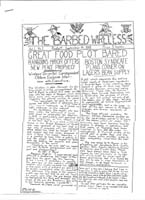 While the completion of the Association hut was delayed due to the construction of new barracks, Hoffman strove to establish
the WPA program at Rastatt. Hoffman set up a library with nearly 1,100 volumes shipped from Switzerland, and the librarian
reported that over two hundred books circulated every day. The Association also organized an extensive school, which offered courses
in French, English, Spanish, arithmetic, science, and agriculture. Experts delivered lectures on a variety of topics such
as forestry, electricity and magnetism, trigonometry, European history, poultry raising, zoology, bacteriology, electrical
mechanics, radium, turbines, statistics, accounting, agriculture, manual arts, woodcraft, drawing, and bookkeeping.
While the completion of the Association hut was delayed due to the construction of new barracks, Hoffman strove to establish
the WPA program at Rastatt. Hoffman set up a library with nearly 1,100 volumes shipped from Switzerland, and the librarian
reported that over two hundred books circulated every day. The Association also organized an extensive school, which offered courses
in French, English, Spanish, arithmetic, science, and agriculture. Experts delivered lectures on a variety of topics such
as forestry, electricity and magnetism, trigonometry, European history, poultry raising, zoology, bacteriology, electrical
mechanics, radium, turbines, statistics, accounting, agriculture, manual arts, woodcraft, drawing, and bookkeeping.
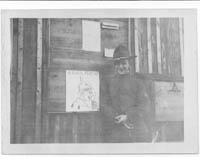 Hoffman also helped the POWs begin a camp newspaper, The Barbed Wireless, which first appeared on 14 September 1918. To help
prisoners pass time during the evening and on rainy days, the Association sent indoor games, and the POWs organized checker,
chess, and domino tournaments. In addition, the YMCA sent a phonograph and record collection. Nor were the spiritual needs
of prisoners ignored. Hoffman arranged to have church services held every Sunday morning in the Orthodox church that the
Germans had built for the Ukrainian prisoners. Every day and night there was something going on to help keep the American
POWs from going crazy.12
Hoffman also helped the POWs begin a camp newspaper, The Barbed Wireless, which first appeared on 14 September 1918. To help
prisoners pass time during the evening and on rainy days, the Association sent indoor games, and the POWs organized checker,
chess, and domino tournaments. In addition, the YMCA sent a phonograph and record collection. Nor were the spiritual needs
of prisoners ignored. Hoffman arranged to have church services held every Sunday morning in the Orthodox church that the
Germans had built for the Ukrainian prisoners. Every day and night there was something going on to help keep the American
POWs from going crazy.12
15
 The Germans sent a small number of Americans on labor detachments from Rastatt. Most went to work on local farms, and thus
they no longer had access to the WPA program in the prison camp. The practice of sending out American prisoners on
Arbeitskommandos was dangerous from a German policy perspective. The German Navy declared publicly that U-boats
would sink American troopships before the U.S. Army could assemble in France; the presence of U.S. POWs among the German
work force gave lie to these claims, and thus undermined war morale. Hoffman made every effort to make sure these men separated
from the main camp were not neglected. He provided them with a circulating library and sent them copies of bulletins and
The Barbed Wireless, and also made sure that they received their parcels and other comforts.13
The Germans sent a small number of Americans on labor detachments from Rastatt. Most went to work on local farms, and thus
they no longer had access to the WPA program in the prison camp. The practice of sending out American prisoners on
Arbeitskommandos was dangerous from a German policy perspective. The German Navy declared publicly that U-boats
would sink American troopships before the U.S. Army could assemble in France; the presence of U.S. POWs among the German
work force gave lie to these claims, and thus undermined war morale. Hoffman made every effort to make sure these men separated
from the main camp were not neglected. He provided them with a circulating library and sent them copies of bulletins and
The Barbed Wireless, and also made sure that they received their parcels and other comforts.13
16
 But life was not idyllic at Rastatt. The senior American non-commissioned officer, Sergeant Edgar M. Halyburton, held the
prisoners on a tight rein. When German guards attempted to purchase supplies (such as chocolate, sugar, butter, and tobacco)
from U.S. POWs, Halyburton intervened and threatened to punish any American caught trading with the enemy. More importantly,
Halyburton worked to thwart German propaganda attempts. The Germans constantly conducted intelligence operations against
American POWs, focusing on prisoners of foreign birth, especially Italians, Poles, Russians, and Czechs. The Germans also
sought to identify the location of American military units. When this proved ineffective, the Germans changed gears by
introducing a special newspaper, called America and Europe, into the camp. The Württemberg Ministry of War
published the propaganda paper, which was edited by Major Tauscher, who had lived in the United States before the war.
Halyburton refused to permit the newspaper to circulate among the American prisoners, and he was eventually transferred to the
prison camp at Heuberg. When Hoffman learned of Halyburton's transfer, he immediately protested to German authorities and
demanded the sergeant's return. The Germans relented, and Halyburton returned to Rastatt.14
But life was not idyllic at Rastatt. The senior American non-commissioned officer, Sergeant Edgar M. Halyburton, held the
prisoners on a tight rein. When German guards attempted to purchase supplies (such as chocolate, sugar, butter, and tobacco)
from U.S. POWs, Halyburton intervened and threatened to punish any American caught trading with the enemy. More importantly,
Halyburton worked to thwart German propaganda attempts. The Germans constantly conducted intelligence operations against
American POWs, focusing on prisoners of foreign birth, especially Italians, Poles, Russians, and Czechs. The Germans also
sought to identify the location of American military units. When this proved ineffective, the Germans changed gears by
introducing a special newspaper, called America and Europe, into the camp. The Württemberg Ministry of War
published the propaganda paper, which was edited by Major Tauscher, who had lived in the United States before the war.
Halyburton refused to permit the newspaper to circulate among the American prisoners, and he was eventually transferred to the
prison camp at Heuberg. When Hoffman learned of Halyburton's transfer, he immediately protested to German authorities and
demanded the sergeant's return. The Germans relented, and Halyburton returned to Rastatt.14
17
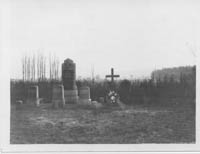 While the number of American prisoners in Germany remained quite small in relation to the POWs of other nations, Conrad Hoffman
played an important role in making sure that their incarceration was tolerable. American prisoners enjoyed a far better lifestyle
than other Allied prisoners-not to mention the German guards-due to the efforts of U.S. organizations to ensure that they
received bountiful food parcels. Their captivity could have been worse if they had been disbursed across Germany in different
prison camps, or had they remained in Tuchel for the duration of the war. Hoffman, as a permanent representative who acted on
behalf of American prisoners in Germany, was in a unique position. Unlike Bishop Herbert Bury, who visited British POWs across
Germany, or Red Cross delegations, Hoffman maintained a constant presence in the field of operations. He insisted that the
Germans assign Americans to a healthy camp and concentrate them so that the YMCA could provide relief services. His reports kept
the U.S. government abreast of the conditions American POWs endured and guaranteed that the vast majority of U.S. prisoners
(99.27 percent) would survive the war.15
While the number of American prisoners in Germany remained quite small in relation to the POWs of other nations, Conrad Hoffman
played an important role in making sure that their incarceration was tolerable. American prisoners enjoyed a far better lifestyle
than other Allied prisoners-not to mention the German guards-due to the efforts of U.S. organizations to ensure that they
received bountiful food parcels. Their captivity could have been worse if they had been disbursed across Germany in different
prison camps, or had they remained in Tuchel for the duration of the war. Hoffman, as a permanent representative who acted on
behalf of American prisoners in Germany, was in a unique position. Unlike Bishop Herbert Bury, who visited British POWs across
Germany, or Red Cross delegations, Hoffman maintained a constant presence in the field of operations. He insisted that the
Germans assign Americans to a healthy camp and concentrate them so that the YMCA could provide relief services. His reports kept
the U.S. government abreast of the conditions American POWs endured and guaranteed that the vast majority of U.S. prisoners
(99.27 percent) would survive the war.15
18
 Although the American YMCA enjoyed great success in its POW relief operations in Germany and Austria-Hungary, and the
World's Alliance achieved advances in Bulgaria, the Ottoman Empire remained stubbornly beyond the reach of the Association's
services. The next chapter will address the problems the YMCA encountered while attempting to negotiate an agreement with the
Turkish government and assess the limited success the Association enjoyed in assisting POWs in Turkey.
Although the American YMCA enjoyed great success in its POW relief operations in Germany and Austria-Hungary, and the
World's Alliance achieved advances in Bulgaria, the Ottoman Empire remained stubbornly beyond the reach of the Association's
services. The next chapter will address the problems the YMCA encountered while attempting to negotiate an agreement with the
Turkish government and assess the limited success the Association enjoyed in assisting POWs in Turkey.
Notes:
Note 1: The Germans sent a small number of American seamen to Rastatt and Villingen, and a few U.S. naval officers to Stralsund and Villingen. Some American civilians also ended up at Altdamm, Altengrabow, Berlin, Carlsruhe, Frankfurt-am-Main, Havelburg, Münster, Rastatt, Stralsund, Villingen, and Katzenau in Austria. Small numbers of American army officers languished at Baden-Baden, Bayreuth, Cassel, Cologne, Danzig, Fürstenfeldbruck, Göttingen, Graudenz, Ingolstadt, Langensalza, Limburg, Luxemburg, Mainz, Metz, Ohrdruf, Parchim, Rastatt, Saarbrücken, Schweidnitz, Stralsund, Trier, Tuchel, Waldesheim, and Zwickau. While the majority of American enlisted and non-commissioned officer POWs ended up at Rastatt, the Germans scattered a small number of U.S. military prisoners among a number of other prisons. These prisons included Altdamm, Bayreuth, Berlin, Carlsruhe, Cassel, Czersk, Darmstadt, Dülmen, Frankfurt-am-Main, Friedrichsfelde, Fürstenfeldbruck, Germersheim, Giessen, Göttingen, Hammelburg, Heuberg, Ingolstadt, Königsbrück, Kreuznach, Lamsdorf, Landau, Langensalza, Lechfeld, Limburg, Mannheim, Merseburg, Metz, Müncheberg, Münster, Neuhammer, Oberhofen, Ohrdruf, Parchim, Saarbrücken, Skalmierschutz, Stargard, Stendal, Stralkowo, Strassburg, Stuttgart, Tauberbischofsheim, Tuchel, Villingen, Weingarten, Worms, Würzburg, Zerbst, and Zwickau. Conrad Hoffman, Jr., In the Prison Camps of Germany: A Narrative of "Y" Service among Prisoners of War (New York: Association Press, 1920), 146; "First Americans in German Prison Camps," Association Men 43 (February 1918): 445; and Carl P. Dennett, The Prisoners of the Great War: Authoritative Statement of Conditions in the Prison Camps of Germany (Boston: Houghton Mifflin, 1919), 40-44. back
Note 2: Hoffman, In the Prison Camps of Germany, 147; E. G. Wilson, "Americans Imprisoned," For the Millions of Men Now Under Arms 2 (1 November 1917): 45-46; William Parker, "From One of the Least of These," For the Millions of Men Now Under Arms 2 (1 November 1917): 46; Rene Legros, "From One of the Least of These," For the Millions of Men Now Under Arms 2 (1 November 1917): 46-47; "First Americans in German Prison Camps," For Three Years the Association Has Been Working with the 6,000,000 European Prisoners of War, but Here Are Letters from Four of "Our Own Boys" Captured on Various Torpedoed Vessels, Who Write of the Association's Service to Them in German Prison Camps Rendered by International Secretaries," Association Men, 43 (February 1918), p. 445; and "If I Were Captured by the Germans: By an American Association Secretary Formerly in German War Prison Camps," For the Millions of Men Now Under Arms 2 (1 November 1917): 3-8. back
Note 3: Hoffman, In the Prison Camps of Germany, 119 and 148-52; Villingen Feldbrief, Armed Services Records Box AS-49: "German Publications, Circa 1918 (Prisoner of War Work)." Kautz Family YMCA Archives, University of Minnesota Libraries, Minneapolis, MN; and Dennett, Prisoners of the Great War, 72-84, 116-17, and 154-55. back
Note 4: Hoffman, In the Prison Camps of Germany, 121-22 and 155-56; and Dennett, Prisoners of the Great War, 56-72. back
Note 5: Hoffman, In the Prison Camps of Germany, 147 and 156-57; and Conrad Hoffman, "Getting the News in Prison Camp: Conrad Hoffman Remained in Germany after America Entered the War and Was Able to Make Life Easier for Captured Americans in Prisoner-of-War Camps, Exacting Self-Government, Baseball, and Big League Baseball Scores for Them," Association Men 44 (January 1919): 397. back
Note 6: Hoffman, In the Prison Camps of Germany, 149 and 153-58; Dennett, Prisoners of the Great War, 166-200; and Richard B. Speed, III, Prisoners, Diplomats, and the Great War: A Study in the Diplomacy of Captivity (New York: Greenwood Press, 1990), 43. back
Note 7: Hoffman, In the Prison Camps of Germany, 133-34. back
Note 8: Hoffman, In the Prison Camps of Germany, 160-63; Lee Shipley, "It Kept Us From Going Mad: With the First Trainload of American Prisoners Brought Out of Germany through Switzerland, Came a Cargo of Praise for the Red Triangle and for Conrad Hoffman, Who Had Supplied the Men with Athletic Goods, Books, and Other Comforts," Association Men 44 (March 1919): 520 and 566; Conrad Hoffman, "Getting the News in Prison Camp," 397; Conrad Hoffman, "Three Days with the American Prisoners of War at the Camp at Rastatt in Germany: Things Heard, Seen, and Done during the Three Days," circa September 1918, 1-5. World's Alliance Box X391.2: "War Prisoners' Aid YMCA, 1914-1915; POW Camps in Germany and France; War Guilt Question." Section 43: "Germany." Folder: "Reports from POW Camps in Germany, 1918." World's Alliance of YMCAs Archives, Geneva; and "Without Y.M.C.A. Life Would Have Been Unendurable: Hundreds of American Prisoners Released from German Cage Make Above Assertion," Red Triangle Overseas 1 (28 December 1918): 1. back
Note 9: Hoffman, In the Prison Camps of Germany, 163-64. back
Note 10: The relative comfort of American POWs often awed German guards. The Germans complained to the American Red Cross that POW parcels were too generous, since U.S. prisoners were playing "catch" with cans of vegetables: while Germans were starving, the Americans literally played with their food (although they did not damage the contents of the cans). "To see good food used in such an apparently reckless manner" had a profound effect on the Germans. Hoffman, In the Prison Camps of Germany,164; Lee Shipley, "It Kept Us From Going Mad," 520; Conrad Hoffman, "Getting the News in Prison Camp," 397; "Without Y.M.C.A. Life Would Have Been Unendurable," 1; and Dennett, Prisoners of the Great War, 230-31. back
Note 11: Hoffman, In the Prison Camps of Germany, 172-78; Lee Shipley, "It Kept Us From Going Mad:" With the First Trainload of American Prisoners Brought Out of Germany through Switzerland, Came a Cargo of Praise for the Red Triangle and for Conrad Hoffman, Who Had Supplied the Men with Athletic Goods, Books, and Other Comforts, Association Men, 44 (March 1919), p. 566; Conrad Hoffman, "Getting the News in Prison Camp,": Conrad Hoffman Remained in Germany after American Entered the War and Was Able to Make Life Easier for Captured Americans in Prisoner-of-War Camps, Exacting Self-Government, Baseball and Big League Baseball Scores for Them," Association Men, 44 (January 1919), p. 397; "Without Y.M.C.A. Life Would Have Been Unendurable," 1; and "War Souvenir He Prizes Most," Red Triangle Overseas 1 (18 January 1919): 1. back
Note 12: Hoffman, In the Prison Camps of Germany, 168-78 and 275; Lee Shipley, "It Kept Us From Going Mad," With the First Trainload of American Prisoners Brought Out of Germany through Switzerland, Came a Cargo of Praise for the Red Triangle and for Conrad Hoffman, Who Had Supplied the Men with Athletic Goods, Books, and Other Comforts," Association Men, 44 (March 1919), pp. 566-67; Conrad Hoffman, "Getting the News in Prison Camp,": Conrad Hoffman Remained in Germany after American Entered the War and Was Able to Make Life Easier for Captured Americans in Prisoner-of-War Camps, Exacting Self-Government, Baseball and Big League Baseball Scores for Them," Association Men, 44 (January 1919), p. 397; "If I Were Captured by Germans: By an American Association Secretary Formerly in German War Prison Camps," For the Millions of Men Now Under Arms 2 (1 November 1917): 6; "Without Y.M.C.A. Life Would Have Been Unendurable," Hundreds of American Prisoners Released from German Cage Make Above Assertion," Red Triangle Overseas, 1 (December 28, 1918), p. 1; and "War Souvenir He Prizes Most," Red Triangle Overseas, 1 (January 18, 1919), p. 1. back
Note 13: Hoffman, In the Prison Camps of Germany, 175; "If I Were Captured by the Germans," 6; and Dennett, Prisoners of the Great War, 230. back
Note 14: Hoffman, In the Prison Camps of Germany, 167-71. back
Note 15: Speed, Prisoners, Diplomats, and the Great War, 73. back
